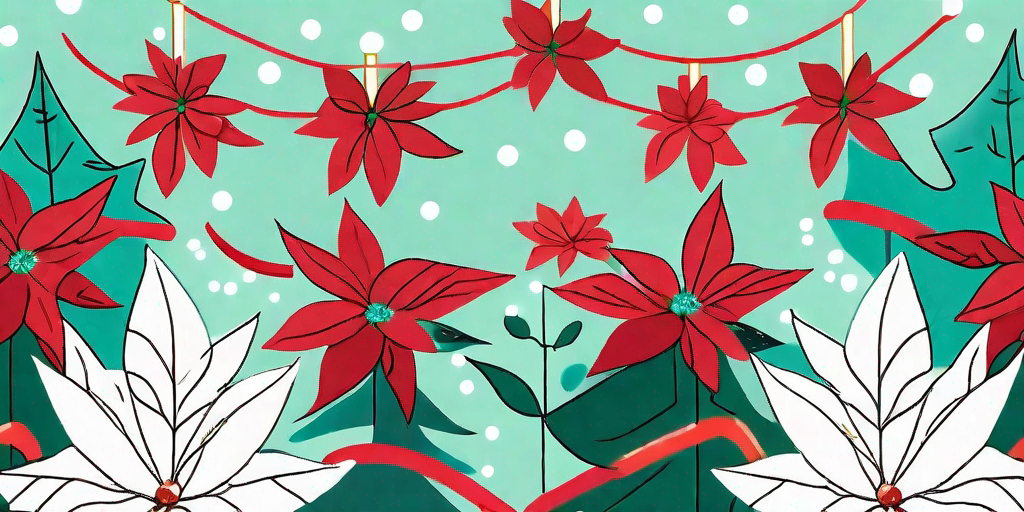
Ah, the holiday season! A time of joy, love, and the inevitable panic about what to do with your garden. Fear not, dear reader, for we have a solution that will not only add a festive touch to your outdoor space but also impress your neighbours and possibly even Santa himself. Enter the poinsettia, the Christmas star of the plant world.
The Poinsettia: A Brief Introduction
Before we dive into the nitty-gritty of poinsettia cultivation, let's take a moment to appreciate this stunning plant. Native to Mexico, the poinsettia (Euphorbia pulcherrima) is a popular holiday plant known for its vibrant red and green foliage. But here's a fun fact: those red 'flowers' are actually leaves, or bracts, that change colour in response to the shorter days of winter.
Now, you might be thinking, "That's all well and good, but I live in a climate that's more 'Winter Wonderland' than 'Feliz Navidad'." Not to worry! With a bit of care and attention, you can grow poinsettias outdoors, even in colder climates. So, let's get started, shall we?
Planting Your Poinsettia
Choosing the Right Spot
Like a diva that it is, the poinsettia demands the spotlight. This means a spot in your garden that gets plenty of sunlight but is protected from harsh afternoon rays. Think of it as a sunbathing spot with a parasol.
Also, poinsettias prefer well-drained soil. So, if your garden has a spot that turns into a mini swimming pool every time it rains, that's a no-go for your poinsettia.
Getting the Timing Right
Timing is everything when it comes to planting poinsettias. The best time to plant is in the spring, after the threat of frost has passed. This gives the plant plenty of time to establish itself before the colder months.
Remember, poinsettias are sensitive to cold temperatures, so if Jack Frost decides to make an early appearance, you might need to provide some protection for your plant. A frost cloth or a portable greenhouse can work wonders.
Caring for Your Poinsettia
Watering and Feeding
When it comes to watering your poinsettia, think Goldilocks: not too much, not too little, but just right. Overwatering can lead to root rot, while underwatering can cause the leaves to drop. A good rule of thumb is to water when the top inch of soil feels dry to the touch.
As for feeding, a balanced, all-purpose fertilizer applied every two weeks during the growing season should keep your poinsettia happy and healthy.
Pruning and Training
Pruning is essential for keeping your poinsettia looking its best. In late winter or early spring, cut back the plant to about 6 inches above the ground. This might seem drastic, but it encourages bushier growth.
Training your poinsettia to grow in a certain shape can also be beneficial. This can be done by pinching out the tips of the plant during the growing season.
Bringing on the Colour
Now for the magic! To get your poinsettia to turn that gorgeous red colour, you need to mimic the natural light conditions of its native habitat. This means providing it with about 14 hours of darkness and 10 hours of natural light each day for about 10 weeks.
Yes, it's a bit of a faff, but the results are worth it. Plus, it gives you a great excuse to sneak out into the garden after dark. Just remember to whisper, so you don't wake the neighbours.
Frequently Asked Questions
- Can I grow a poinsettia from a cutting?
Yes, you can! Take a cutting about 6 inches long, remove the lower leaves, dip the cut end in rooting hormone, and plant it in a pot filled with a mix of perlite and peat moss. Keep the cutting moist and in a warm spot, and it should root in a few weeks.
- Why are the leaves on my poinsettia turning yellow?
This could be a sign of overwatering. Remember, poinsettias prefer their soil to be on the dry side, so make sure you're not giving your plant a daily drenching.
- Can poinsettias survive frost?
Poinsettias are not fans of frost. If temperatures are expected to drop below 50°F (10°C), it's a good idea to provide some protection for your plant.
So there you have it, folks! With a bit of care and attention (and a dash of holiday magic), you too can grow stunning outdoor poinsettias. Now go forth and bring that festive cheer to your garden!















